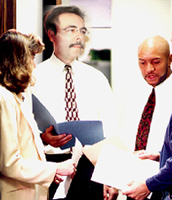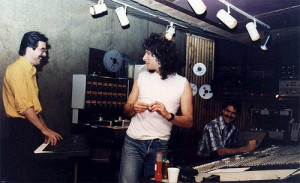They don’t call it web-design for nothing! Supported by vivid imagery, whether in the form of still pictures, charts and graphs, or stunning animations, websites have come a long way from the text-only web pages of yesterday. Coupled with well-proportioned layout and logical visual flow, today’s website really should be a work of art. The web designer’s palette has expanded over the years in just about every area, and graphics are certainly no exception.
Photographs, cartoons and drawings can all be rendered on web pages, and when appropriately placed, can have a great deal of impact. Generally, when a client provides me with images or image concepts for a site, that’s only the first step. Images must be web optimized, in terms of resolution (the Internet imposes some pretty rigid constraints there), brightness, color-correction and sizing. Remember also, that many mundane page objects like ‘buttons’ and logos are also graphics, and require very special attention if they’re to be successful. Often such attention results in very subtle changes, but they sure are worth it! (For example, take a look at my logo at the top-left of this page – see how the background ‘brightens’ slightly behind the logo, almost as if the logo lights it up? Sometimes it’s the little things that really make a page ‘pop’!)
Whenever possible, I like to use custom imagery for a site, whether it is provided by the client, or I shoot it myself, this brings a freshness and vitality to the project with the added bonus of freedom from copyright constraints, which are a very real concern.
A word about animation… Making things move around on a web page used to be completely impossible. Then came the animated GIF – a simple and small self-contained graphic…
Then came DHTML – dynamic HTML, the combination of JavaScript, CSS and HTML that enabled simple motion like you see with the menu above (if your browser has JavaScript enabled, that is)…
 Featuring custom site design, and the implementation of dynamic site components, a LightSites-designed site can be counted on to serve the clients’ needs thoroughly and intuitively. From e-commerce solutions to content management, image optimization to copy editing, every detail is carefully thought through and executed in the most streamlined and efficient manner possible. LightSites now provides hosting as well, closing the loop on full service for a comprehensive approach to web identity.
Featuring custom site design, and the implementation of dynamic site components, a LightSites-designed site can be counted on to serve the clients’ needs thoroughly and intuitively. From e-commerce solutions to content management, image optimization to copy editing, every detail is carefully thought through and executed in the most streamlined and efficient manner possible. LightSites now provides hosting as well, closing the loop on full service for a comprehensive approach to web identity.
 Like LightSites on Facebook
Like LightSites on Facebook Follow LightSites on Twitter
Follow LightSites on Twitter A composer
A composer Simply put, I’m available on a free-lance basis as a consultant in a variety of Internet-related capacities. Whether you’re a do-it-yourselfer contemplating your very first website, or are an advanced designer looking for a quick solution to a vexing problem, if I can help, I will!The only strict policy I have on consulting is this: If I don’t know the answer, I’ll say so! Then, I’ll do my best to find it for you or refer you to someone who does – at no charge.
Simply put, I’m available on a free-lance basis as a consultant in a variety of Internet-related capacities. Whether you’re a do-it-yourselfer contemplating your very first website, or are an advanced designer looking for a quick solution to a vexing problem, if I can help, I will!The only strict policy I have on consulting is this: If I don’t know the answer, I’ll say so! Then, I’ll do my best to find it for you or refer you to someone who does – at no charge.